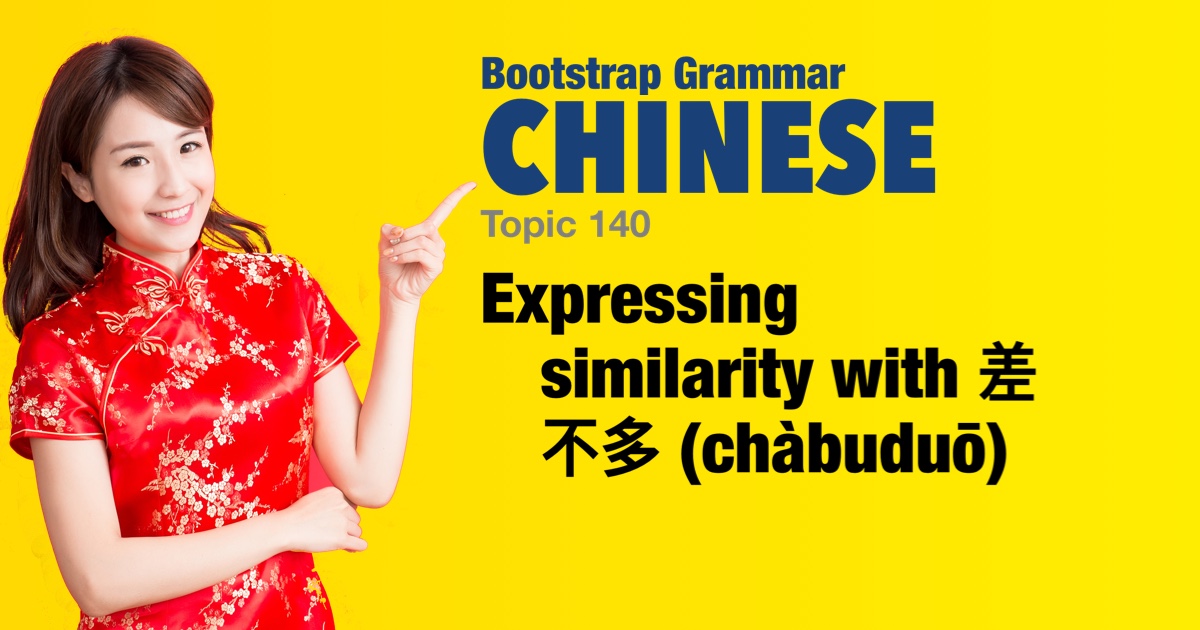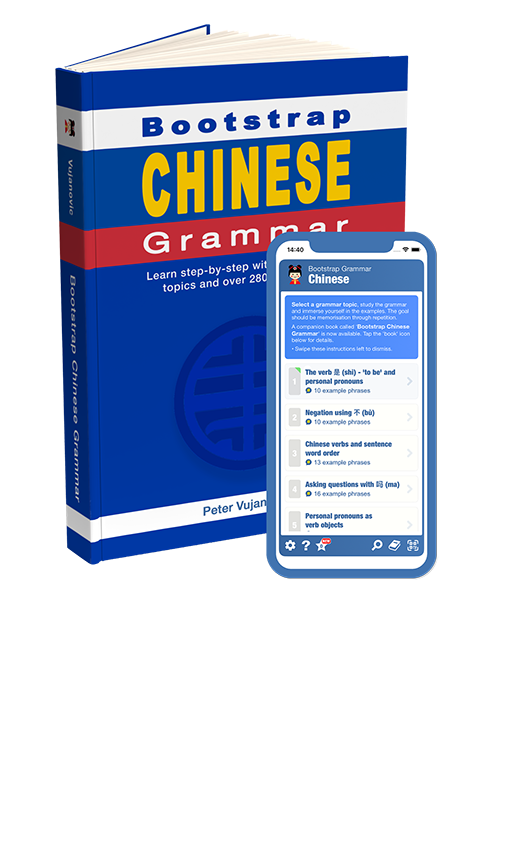Chinese grammar - Expressing similarity with 差不多 (chàbuduō) |
|||
|
|||
As we saw in the previous topic the Chinese word 差不多 (chàbuduō) has slightly different meanings depending on its useage. In this topic we look at its use with adjectives. When used with an 'adjective', it means that things are 'almost the same' in some character or attribute. The particle 和 (hé) is used to link two nouns or pronouns being compared. — Recall that 和 (hé) means 'and' or 'with' The pattern is: [noun1] + 和 + [noun2] + 差不多 + [adjective] |
| Examples: | |
|
他和我差不多高。
tā hé wǒ chàbuduō gāo. He and I are almost the same height.
|
|
|
这本书和那本书差不多厚。
zhè běn shū hé nà běn shū chàbuduō hòu. This book and that book are almost the same thickness. |
|
|
今天的天气和昨天差不多热。
jīntiān de tiānqì hé zuótiān chàbuduō rè. Today's weather is almost as hot as yesterday. |
|
|
他的汉语水平和我差不多。
tā de hànyǔ shuǐpíng hé wǒ chàbuduō. His Chinese level is almost the same as me/mine.
|
|
|
这两个城市差不多大。
zhè liǎng gè chéngshì chàbuduō dà. These two cities are almost equally large. |
|
|
他们的年纪差不多大。
tāmen de niánjì chàbuduō dà. They are almost the same age.
|
|
|
这两个盒子差不多重。
zhè liǎng gè hézi chàbuduō zhòng. These two boxes are almost the same weight. |
|
|
我们的工作时间差不多长。
wǒmen de gōngzuò shíjiān chàbuduō cháng. Our working hours are almost the same length. |
|
|
如果这两个手机差不多贵,就买更大的。
rúguǒ zhè liǎng gè shǒujī chàbuduō guì,#jiù mǎi gèng dà de. If the two phones are almost the same price, buy the larger (one). |
|
 |
|


 Note the use of
Note the use of 
